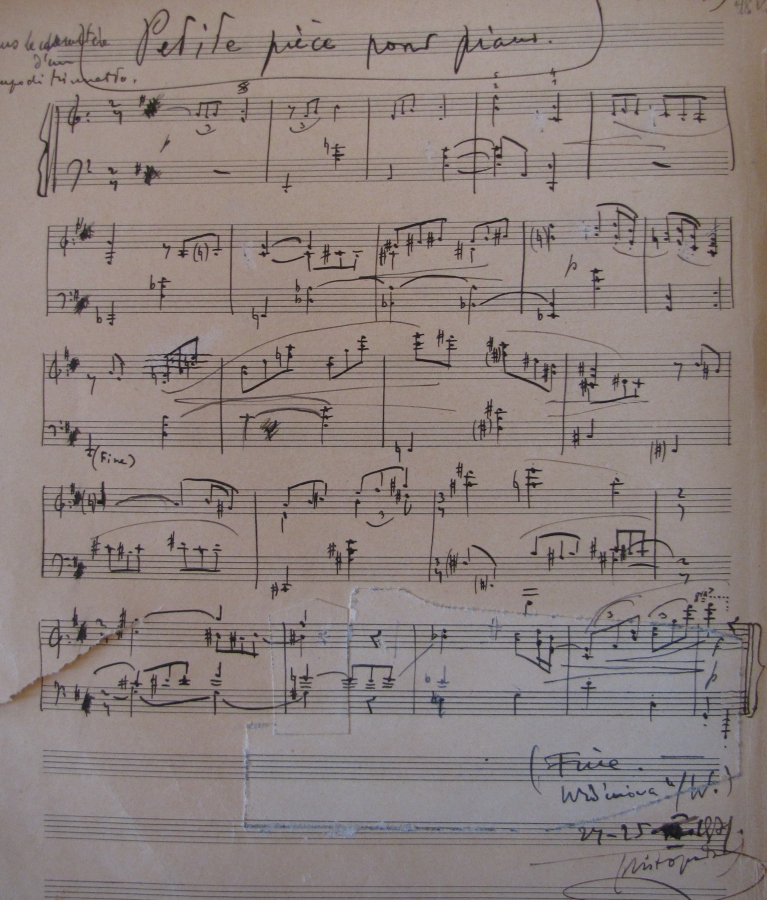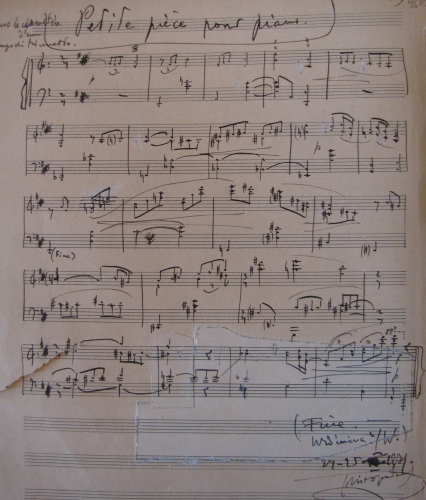
Triptych for piano (1931–1932)
Petite pièce pour piano. Dans le caractere d’un Tempo di minuetto (1931) [originally a stand-alone composition; in the end – second part of the Triptych (1931–1932)]
dedication: –
duration: ca 1’
manuscript: Zygmunt Mycielski Archive, Manuscript Department, National Library, no. IV 14313, akc. 020704
premiere: ?
Vivo (1932) [first part of the Triptych (1931–1932)]
dedication: to Tadeusz Szeligowski
duration: ca 1’
manuscript: Zygmunt Mycielski Archive, Manuscript Department, National Library, no. IV 14313, akc. 020704
premiere: ?
Allegro (1932) [third part of the Triptych (1931–1932)]
dedication:
duration: ca 1’
manuscript: Zygmunt Mycielski Archive, Manuscript Department, National Library, no. IV 14313, akc. 020704
premiere: ?
The last of the five piano Preludes was written almost at the same time as a piece entitled Petite pièce pour piano for piano, the middle section of Triptych, dedicated to Tadeusz Szeligowski.
Written between November 1931 and July 1932, Triptych consists of the following parts: Vivo – Petite pièce pour piano – Allegro. The middle part is most likely the “Ravelian prelude”, completed at the same time as the chorale from the Five Preludes for piano, of which Mycielski wrote in a letter to his mother:
I’m coming back from the last (fifth) prelude. It’s late. I’ve have sketched another one, and one (Ravelian) is now complete
(21 November 1931).
In the first part of the Triptych, Vivo, the composer engages in a textural game, as it were, moving from a two- to three-voice texture or sometimes losing one of the voices, as if dissolving them in the accompaniment. As in the previous miniatures, he often changes the metre, and the numerous syncopations resulting from the tying of notes in adjacent bars contribute to the blurring of regular pulsation.
The middle section, Quasi-Minuet is, in fact, a piece to be interpreted in the style of the minuet (Dans le caractere d’un Tempo di Minuetto), as the basic feature of this dance – triple metre – has been replaced with duple metre. The prelude referred to by Mycielski as “Ravelian” is not, however, as subtle harmonically as Maurice Ravel’s works, although it does clearly draw on Ravel’s style.
The finale of the Triptych, Allegro, highlights the centralising function of motifs in a two-voice texture. The descending strings of two groups of five quavers, a second apart of each other, form a background over which a melodic line freely develops in the upper register (bars 1–7). A two-bar link is followed by a reversal – the centralising material is shifted to the upper register, while the meandering melodic line moves below, to the one-line octave.
